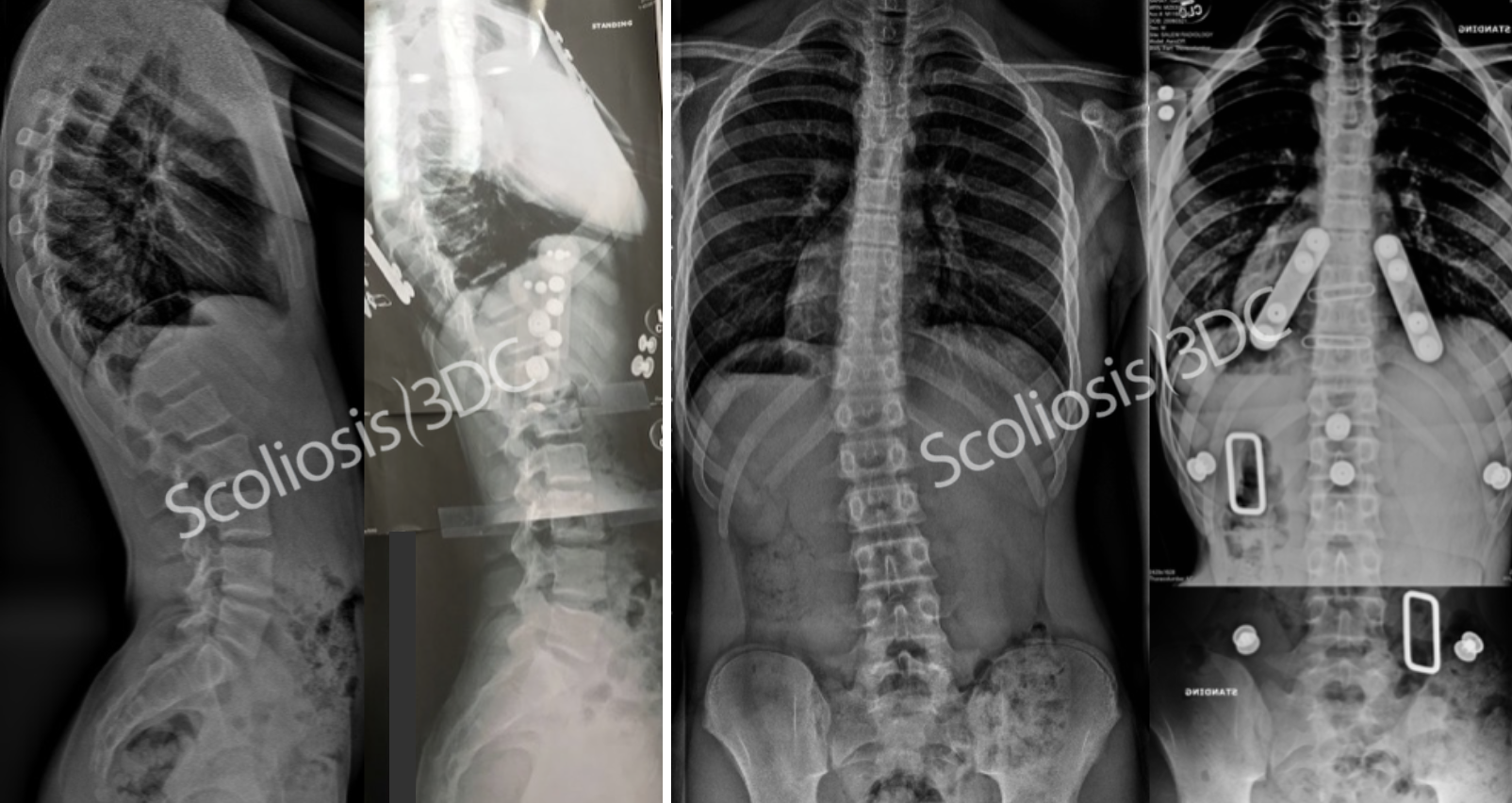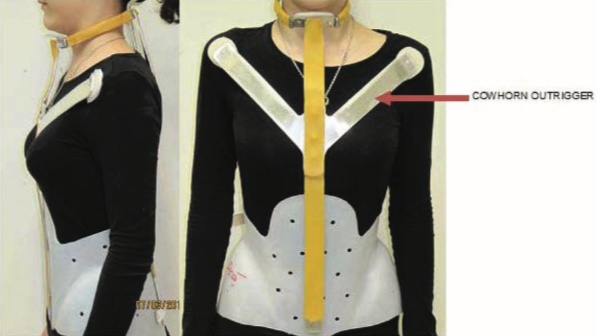Kyphosis patients present with an exaggerated outward rounding of the upper (thoracic) spine, which when left untreated can continue to progress during periods of growth. The Kyphologic brace is a great treatment option for patients with kyphosis, kyphoscoliosis, or Scheuermann’s disease.
The Kyphologic brace, from Germany, uses specific pressure points to induce spinal correction in-brace. The Kyphologic brace is designed to reduce anterior vertebral loading during adolescence, thereby allowing the spine to move towards a more normal position in the sagittal plane. For adults, the Kyphologic brace may help provide pain relief and spinal support during part-time wear.
Historically, the Milwaukee CTLSO brace has been used to treat kyphosis and still is in most places. A 2009 study by Weiss et al. concluded that the in-brace correction results of the Kyphologic brace are comparable to those of the Milwaukee brace and in our clinical experience can often offer spinal improvement. As shown in the photos below, the Kyphologic brace uses much less hip material and has no cervical extension hardware, making the brace easier to wear and conceal.



The kyphosis brace utilizes two 3-point pressure systems. The first pressure-point system focuses on three areas: the posterior sacral zone, anteriorly below the chest, and posteriorly at the thoracic apex. The second point system also includes pressure points at the anterior lower rib area, posteriorly at the thoracic apex and a two-pad system located just below the clavicles. These pressure points work to induce retraction of the scapulas thereby creating thoracic extension.
There are two closure straps at the front of the brace. The upper strap exerts pressure on the lower ribs to decrease the rib prominence while the lower strap focuses on pelvic stabilization. This closure system allows the Kyphologic brace to provide pelvic support without excessive material at the hips (as seen in other kyphosis braces).
If you are interested in learning more about the Kyphologic Brace for either you or your child, please contact us.
Weiss HR, Turnbull D, Bohr S. Brace treatment for patients with Scheuermann’s disease – a review of the literature and first experiences with a new brace design. Scoliosis. 2009;4:22.
Weiss HR, Werkmann M, Bohr S. In-brace corrections in patients with kyphosis using the kyphologic® brace. Scoliosis. 2009;4(Suppl 2):O61.
Bettany-Saltikov J, Turnbull D, Ng SY, Webb R. Management of Spinal Deformities and Evidence of Treatment Effectiveness. The Open Orthopaedics Journal. 2017;11:1521-1547.

